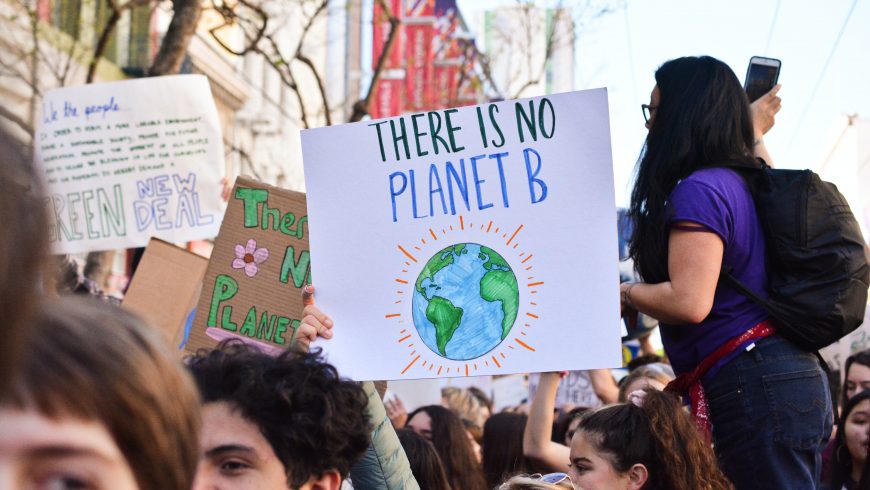Every year the number of environmental strikes among the younger generation is growing. Why? Let’s take the Intergovernmental Panel on Climate Change (IPCC) report as an example. According to this study, scientists found that human activity caused global warming by about 1.0 °C. Thus, if people do not cease to affect the climate negatively, then between 2030 and 2052, this figure will reach 1.5 °C and will increase continuously.
We gave one of the striking examples that show that students from an early age should study ecology to avoid the death of the Earth. Other situations cause outrage among students:
- Floating trash islands.
- Death of sea creatures.
- Non-recyclable plastic.
- Artificial thread clothing.
- Large forest fires due to climate change.
Unfortunately, teachers rarely raise environmental issues and problems. Ignoring such situations will lead to the fact that soon people will have to look for another planet for life. However, if you are a student and want your educational institution to participate in environmental studies, here are seven eco trends you should talk about.
Air

Thousands of years ago, there was a different atmosphere on Earth. At first, only oxygen existed, but aerobic organisms were formed after a while – creatures that feed on this gas. The vitality of any living organism depends on the quality of air.
You probably know from biology lessons that plants produce oxygen. However, today people are faced with a global problem – deforestation. Due to the destruction of fauna, we will all breathe in dirty air, which will lead to the extinction of humanity. Oxygen is one of the factors affecting the state of the atmosphere of our planet. For medical reasons, in densely populated cities, high levels of toxic substances are caused by the lack of forests to purify the air.
The main eco problems due to the lack of trees are dustiness, gas pollution, noise pollution, overcrowding, allergic reactions, viral and bacterial infections. What can students and teachers do? Conduct volunteer activities and drum up people to plant trees. As a result, every tree you plant helps the planet and humanity breathe.
Water

The next factor and eco-trend that is important for humanity is water. We all know that the human body is 60-80% water; 2/3 of the Earth’s surface is water. However, this does not stop most people, and because of this, the oceans, seas, rivers are being polluted. Most often, people destroy the world’s oceans by extracting oil from offshore fields. If the substance is not extracted correctly, the release of oil into the water threatens the extinction of marine animals. Likewise, garbage islands continuously drifting over the surface of the oceans and seas harm aquatic life.
Freshwater is the most vulnerable. Every day, various toxic substances enter rivers and lakes, such as mercury, lead, pesticides, arsenic, and many other harsh chemicals. Moreover, when students consume poorly purified water, it destroys the body. Some school cafeterias sell soda. Did you know that cola contains a lot of sugar, which increases insulin production in the pancreas? This is what provokes cancer.
What can students and teachers do? Here are some tips that each of you can do to combat water pollution:
- Dispose of plastic materials in waste containers designated for plastics.
- Try replacing commonly used plastic products with other natural materials.
- Take glassware instead of plastic ones to relax on the water.
- Organize water purification rallies.
We also strongly recommend that you give up carbonated drinks and, if possible, drink purified water. For example, Coral Club has launched a line of bags with nutrients that make water alive. They are much cheaper than soda and are healthier.
Earth

The primary foundation of life on Earth is soil. It is known that for the planet to create one centimeter of black soil, it will take about 300 years. Today, on average, one centimeter of such fertile soil dies in three years.
Land degradation is currently affected by about 1.9 billion hectares on the planet or about 65% of the world’s soil resources – 85% of this is caused by soil erosion. About 1.5 billion people are directly dependent on the availability of food produced on degraded lands. World agriculture loses over 36 billion tons of fertile soil annually due to soil erosion. The economic costs of soil erosion, both agricultural and off-farm, are estimated at US $ 400 billion per year.
What can students and teachers do? Each of you can plant trees, grasses, and shrubs that protect the area from winds, washings and prevent acidification. Only agrarians speak about this problem most often. However, if these issues are raised in the education system, then we will become the generation that will benefit the Earth instead of harm.
Climate

The totality of all environmental problems leads to a deterioration of the climate. We can compare the climate to the health of the planet. When specific organs of the Earth suffer, then all this is reflected in the climate. To show you clearly, this is the same as eating junk food, which is then displayed on the skin. Anthropogenic factors influence climate change. Anomalies such as snow in summer or heat in winter are directly associated with human activity.
Also, due to human activities over the years, we notice the melting of glaciers, a large amount of rain, natural disasters, a cold snap at the equator, and much more. Teachers talk about these problems only, in theory, asking for English homework in the form of essays or presentations – if you have difficulties with student assignments, a professional writer will help you.
However, what can students and teachers do in practice? Here are four current ways to contribute to the fight against climate change:
- Use environmentally friendly modes of transport – bicycles or electric vehicles.
- Unplug electrical appliances that you are not using.
- Reduce your meat intake in favor of fruits and vegetables. Meat production entails massive greenhouse gas emissions.
- Spread as much knowledge as possible about climate change and what it means.
If the education system attracts the younger generation’s attention, then not only Leonardo DiCaprio will succeed. Together we can leave a prosperous planet for the next generation.
Health

Human health is similar to a construction set – the absence of one part of a breakdown affects the state of the body as a whole. For example, lifestyle, diet, physical activity, environment, and people will undoubtedly affect a person. The state of a person depends on the environment most of all. If there are negative impacts from the environmental side, this will certainly be reflected in the external indicators of the body.
In biology and chemistry lessons, teachers talk about the dangers and benefits of various substances. However, the education system does not teach students to be healthy. This eco-trend is essential in education because a healthy student can participate in educational activities and build a successful career.
Teachers should be actively involved in promoting healthy lifestyles to students. For example, they should say that being healthy doesn’t always mean taking pills. Teachers should talk about good habits, nutrition, and physical activity. By gaining health knowledge, students will be able to make the right choices in the adult world. Students will be able to quit smoking, drugs, alcohol, and we will gain a generation that knows the value of life.
Food

When a student does not eat well, metabolism, organ function, and productivity are impaired. In turn, organ dysfunction leads to more severe health problems. Unfortunately, the education system has not even created canteens that would provide students with proper nutrition.
The greatest threat to human health is posed by chemicals, piece-made fertilizers, and pesticides. Farmers use these materials to improve productivity growth. In addition, some companies manage to use additives and dyes to improve the product’s appearance, increase shelf life and reduce the influence of factors on transportation. Also, today, there are cases when people add heavy metals and unfavorable elements that negatively affect the human body. For example, in many products, we can find mercury, arsenic, lead, cadmium, manganese, tin, and others.
Note that the meat of chickens, turkeys, ducks, cows, pigs may contain toxic additives that provoke cancer, slow down metabolism, cause blindness, destroy bones and cause other serious diseases. Therefore, the education system should pay special attention to the nutrition of students. For example, the leadership of educational institutions should:
- Purchase products from non-GMO farms.
- Carefully study the expiration dates, compositions, and symbols indicated by the manufacturer on the packaging.
- Do not partner with suppliers of products that do not care about the health of students.
As a result, the leadership of educational institutions will be able to reduce the incidence of poisoning, gastritis, and stomach diseases. If your school, college, and university are still far from this, then use all possible means to attract teachers’ attention to the fight against poor nutrition.
Finance

Financial literacy is an integral part of the environment. The education system should urge students to refrain from impulsive impulse purchases, and this also applies to shopping during seasonal Black Friday discounts. After such a purchase, a lot of plastic waste remains. Students do not hand them over for recycling and disposal but throw them in a landfill.
Over the past 15 years, apparel sales worldwide have doubled, while their average life has dropped dramatically. On average, students wear something for less than a year. The reason for this is buying cheap things because students cannot afford better clothes.
However, if teachers focused the students’ attention on buying fewer clothes and wearing them longer, then there would be fewer bags of clothes that no one else needs. For example, inexpensive stores such as ZARA and H&M produce clothes from natural fabrics that can last for many years.
The textile industry produces more than a billion tonnes of CO2 annually – more than all international air travel and shipping. Therefore, the education system should introduce financial literacy lessons in all educational institutions to protect the environment.
Cover image: Photo by Ankit Choudhary on Unsplash




